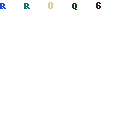Greek and Hebrew Alphabets with Numeric Values
Below is a commonly used table of Greek and Hebrew
alphabet=numerical values. In English, we have alpha and
numeric characters: a,b,c,d,e, etc., & 0,1,2,3,4,
etc. Both Greek and Hebrew have only one set of
characters used for both words and numbers. When a word
in Greek, for example, is written out, it has a
mathematical value. This value is called the
gematria.
While many scholars disagree on the numerical values
attached to the two alphabets, and valid arguments can be
made, the table below is designed to be used as a
reference point only and not as a basis of scholarly
discussion.

Commonalities of the Greek and Hebrew Alphabets
Greek and Hebrew have no known common root, but the
Greek alphabet is derived from the Phoenician/Hebrew
alphabet; the Phoenician and Hebrew languages are very
closely related; like dialects of one language.
The names of the Greek letters have their origins in
Phoenician and Hebrew. They come from pictographs where
the letters were originally derived by simplification.
"Aluph" means bull (derived from a bull pictogram), "bet"
means house (from the Hebrew "bayt") , "Gamma" comes from
"Gammal", meaning camel, and so on. The Greeks added some
new letters, those that come after Tau.
During the Hellenistic period, when Palestine was part
of the Seleucid and Ptolmaic empires, Hebrew borrowed
many Greek words.
The root "AGR" has two meanings in Hebrew. In one of
these meanings it denotes collecting/gathering/storing.
This sense of the root may have been borrowed from Greek.
However, the root "AGR" in Hebrew also has the meaning of
reward/recompense/price/fee. It has this meaning also in
Aramaic and Arabic. The modern Hebrew "agorah" is derived
from "AGR" with this old Semitic meaning.
 We've just
opened up an exciting new archive of ancient and rare
Celtic symbols and meanings from the mysteries of the
Druids. Great new full-color images of Celtic signs,
symbols and sigils:
We've just
opened up an exciting new archive of ancient and rare
Celtic symbols and meanings from the mysteries of the
Druids. Great new full-color images of Celtic signs,
symbols and sigils:
No comments:
Post a Comment